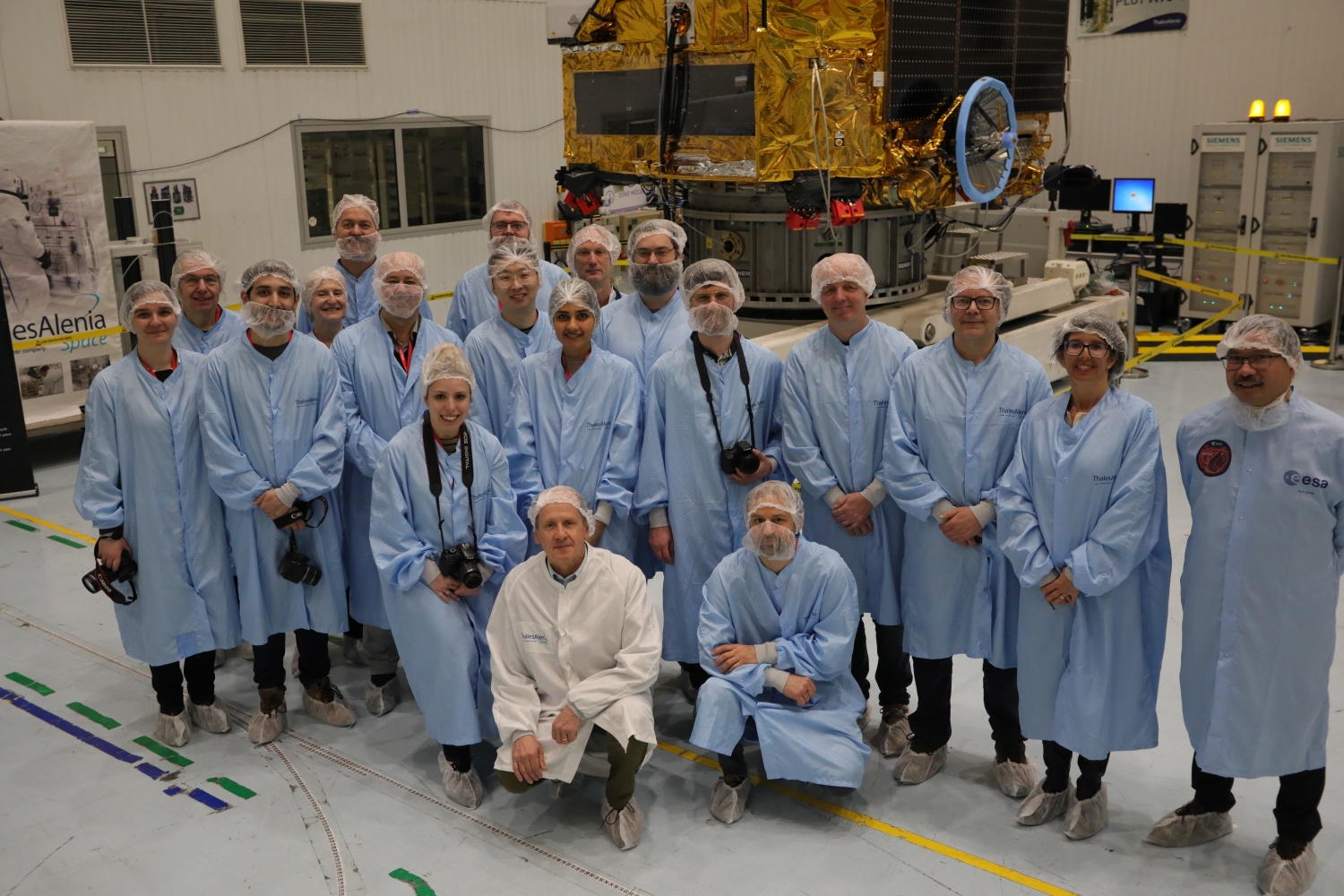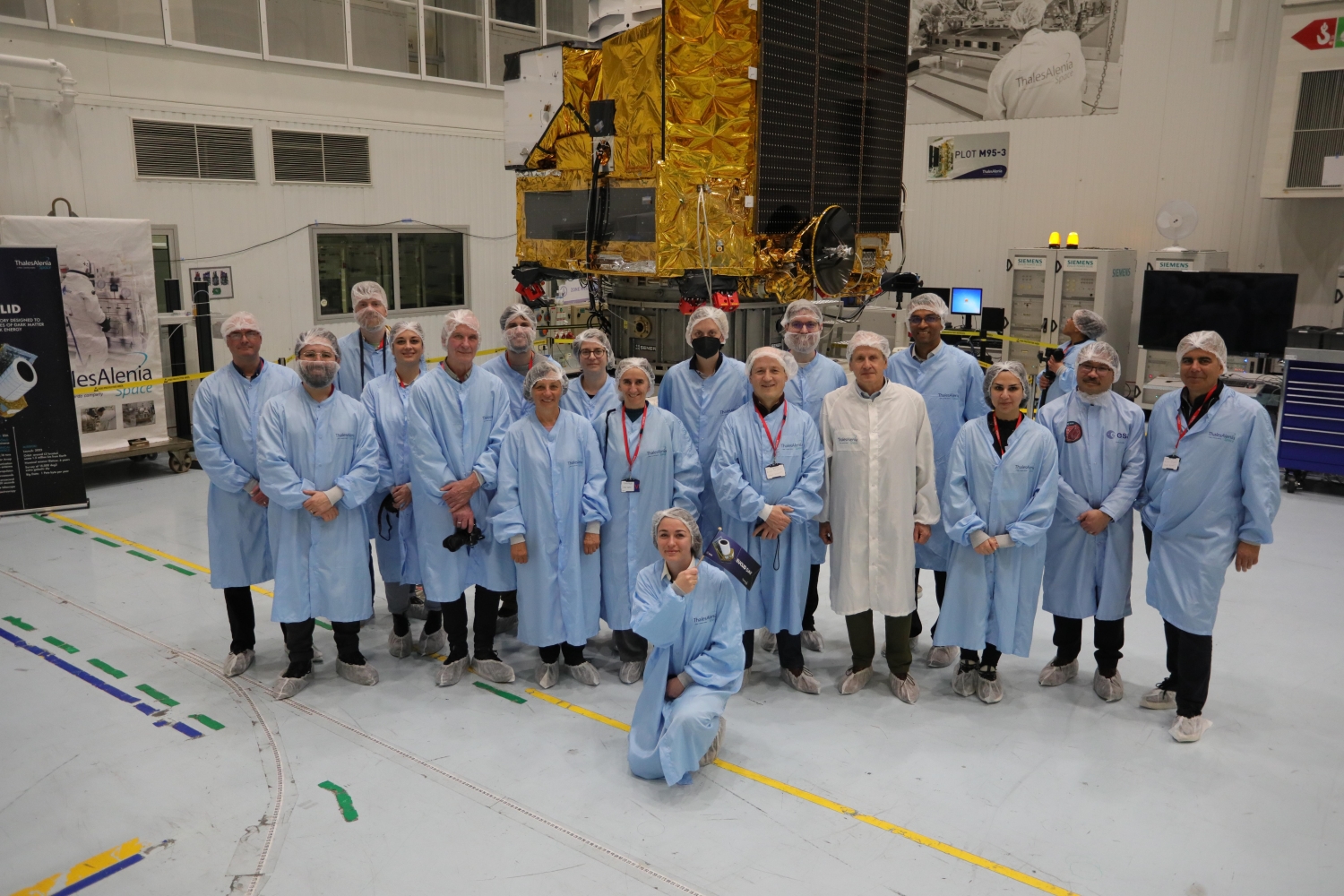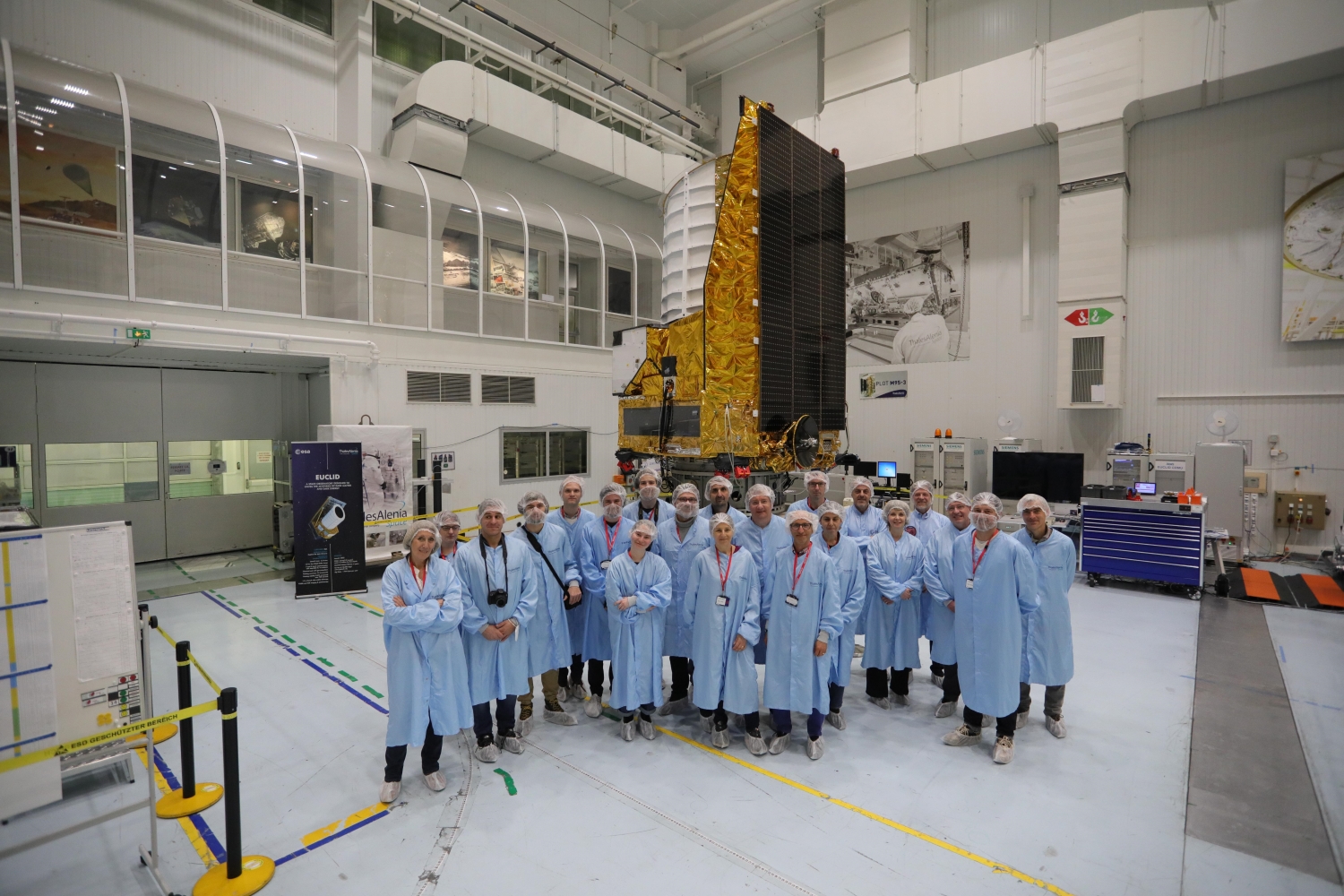When grey matter helps understand dark matter…
On February 22, Thales Alenia Space, joint venture between Thales (67%) and Leonardo (33 %) and industrial prime contractor for Euclid, together with European Space Agency (ESA) welcomed for the first time eminent scientists from the Euclid Consortium with the satellite in its final integration phase. The iconic Euclid satellite will study one of the Universe’s best kept secrets, namely dark matter and dark energy.

© Thales Alenia Space
More than 80 scientists were delighted to discover the impressive spacecraft that they hope will help answer the question that has long perplexed them: why the Universe is expanding at an accelerated rate and what is responsible for this acceleration, which physicists suspect may be “dark energy”.
Back in June 2012, ESA selected the Euclid Consortium to take charge of the scientific instruments, data production and operation of the scientific aspects of the mission. It is funded by national space agencies and research organizations and coordinated by the Euclid Consortium Lead (ECL) and a Euclid Consortium Board (ECB)
A unique scientific organization for a unique mission

© Thales Alenia Space
The Euclid Consortium comprises the teams that first designed and proposed the Euclid mission as a candidate for the ESA Cosmic Vision program, as well as new organizations that are now contributing to implementation. Fourteen European countries are currently involved in the consortium’s activities (Austria, Belgium, Denmark, Finland, France, Germany, Italy, the Netherlands, Norway, Portugal, Romania, Spain, Switzerland and United Kingdom). Other members include Canada and the United States (through NASA and several American laboratories), as well as several Japanese laboratories.
A total of about 1,500 members are registered in the Euclid Consortium, including more than 900 researchers in astrophysics, cosmology, theoretical physics and particle physics. Also contributing to Euclid are more than 200 laboratories covering all fields relevant to the mission, spanning astrophysics, cosmology, theoretical physics, high energy physics, particle physics and space science.

© Thales Alenia Space
During its six-year mission, Euclid will map the large-scale structure of the universe out to a distance of more than 10 billion light-years to show how it has expanded and how its structure has evolved over the last three-quarters of its history. The mission is designed to answer some of the most fundamental questions in modern cosmology, such as how the universe formed and why it is expanding at an accelerating rate instead of being slowed by gravitational attraction.
Euclid’s payload consists of a 1.2-meter-diameter telescope and a cold optical bench housing the sensors of the two optical instruments: the Visible Instrument (VIS) and the Near Infrared Spectrometer and Photometer (NISP). These two instruments will operate in tandem, simultaneously recording data from the patch of sky targeted by the telescope.
• The VIS instrument will precisely measure galaxy shapes by using the clearest images of distant galaxies, via a mosaic of 36 CCD sensors, each composed of a matrix of 4,000 x 4,000 pixels. This gives the detector a total of about 600 megapixels.
• The NISP instrument will obtain spectroscopic measurements of galaxies by splitting their light into individual wavelengths to deduce their redshift. This will allow cosmologists to estimate how far away these galaxies are. Euclid’s data will constitute the largest, most accurate 3D survey of the Universe ever undertaken.

© Thales Alenia Space
By combining VIS and NISP data, scientists will be able to infer how the distribution of galactic structures has evolved over cosmic eons. This will help them to determine the growth rate of such structures and thus get a better idea of what dark matter and dark energy are and how much there is in the universe.
Standing 4.7 meters tall and weighing about 2 metric tons at launch, Euclid will orbit the L2 Lagrange point in the Sun-Earth system, 1.5 million kilometers from Earth opposite to the Sun. It will deliver 150,000 high-definition images and associated chromatic and spectral information, amounting to nearly one petabyte of data per year. Euclid is scheduled to be launched in July 2023 on a SpaceX Falcon 9 rocket from Cape Canaveral, Florida.


